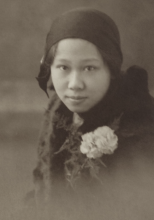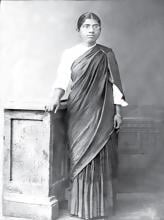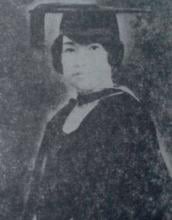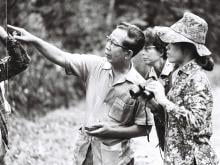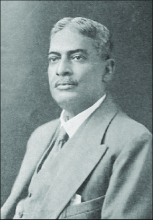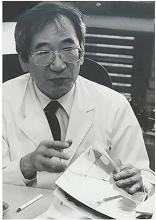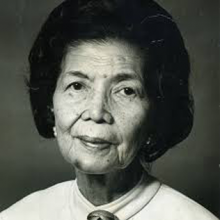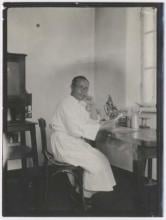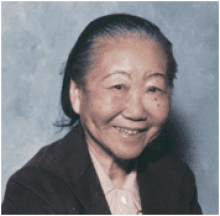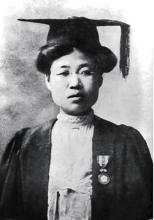Medicine
News

21 Jun 2006
Summaries of newsworthy papers in Nature: Thymus bipotent precursor cells found, Cell regeneration in mammalian inner ear, Eavesdropping yields benefits, T-cell link to cancer, The hole story, Cellular spaces fuse into blood vessels, Pump up the bandwidth

19 Jun 2006
Venereology (the study of venereal diseases) today encompasses more than the five classical venereal diseases (syphilis, gonorrhea, chancroid, donovanosis and lymphogranuloma venereum).This article briefly deals with various facets of evolution of venereology in India.

19 Jun 2006
Antiaging therapies, Evolution of venereology in India, No association between seropositivity for Hepatitis C virus and lichen planus: A case control study, Achieving asepsis of banana leaves for the management of toxic epidermal necrolysis and many more

19 Jun 2006
The scourge of plagiarism, Orbital regional anesthesia: Complications and their prevention; Long-term anatomical and visual outcome of vitreous surgery for retinal detachment with choroidal coloboma, Asian experience with the Pintucci keratoprosthesis and many more

18 Jun 2006
Summaries of newsworthy papers from Nature Research Journals that will be published online on 18 June 2006.

16 Jun 2006
Why it is important to have a journal of respiratory medicine in the Gulf region?, Asthma care: Structural foundations at primary health care at Al-Qassim region, Saudi Arabia; Six minute walk test in respiratory diseases: A university hospital experience and many more

15 Jun 2006
Summaries of newsworthy papers from Nature Vol.441 No.7095 including Two become one, A glass from dry ice, Unhappy partners, Self-renewal understood, Sperm storage weakens immune system

13 Jun 2006
Understanding of the human genome, nuclear cloning, rational drug designing and application of high throughput screening in drug discovery programs, might lead to new drug discoveries for orphan diseases. Hence, there is hope in future for patients neglected by for-profit drug discovery efforts.

13 Jun 2006
CIMS lists more than 100 irrational combinations which are not approved in any developed country but are being marketed in India.

13 Jun 2006
Production of Diphenol and Monophenol compounds from the leaf callus of Morus Alba and studies on their antibacterial properties

11 Jun 2006
Irrational drug combinations: Need to sensitize undergraduates; Orphan diseases and drugs; Exploring Indian medicinal plants for antiulcer activity; Rimonabant: A new class of drug to fight obesity and many more

11 Jun 2006
Summaries of newsworthy papers that will be published online on 11 June 2006 by Nature and the Nature Research Journals

08 Jun 2006
The results show that tropical pancreatitis may represent one end of the wide spectrum of chronic pancreatitis in the tropics, with alcoholic pancreatitis representing the other extreme.

08 Jun 2006
The Indian Journal of Gastroenterology publishes original scientific studies, state-of -the-art special articles, reports and papers commenting on the clinical, scientific and public health factors affecting aspects of gastroenterology.

05 Jun 2006
Two new initiatives launched by Nature this week are set to explore a bedrock of scientific publishing. A web debate on peer review and a limited trial of open peer review are launched on Monday 5 June 2006.

04 Jun 2006
Summaries of newsworthy papers from Nature and the Nature Research Journals published online on 4 June 2006; Genetics: New class of small RNAs revealed, Urinary tract microbicide prevents infection, Meeting the demands of immune defense, Mention of papers to be published at the same time.

02 Jun 2006
The demand for new learning and training method has increased in order to cope with the development of dental technology as well as changing of oral disease patterns. These issues have masterminded the idea of creating an interactive, low cost, portable and experiential dental learning environment.

28 May 2006
NATURE AND THE NATURE RESEARCH JOURNALS PRESS RELEASE - For papers that will be published online on 28 May 2006

25 May 2006
Summaries of newsworthy papers from Nature Vol 441, No 7092 including Electrons probe magnetic properties with a twist; Switching to nanowire transistors;Mechanism links protein misfolding to brain disease; Lobsters keep sickness at bay

25 May 2006
There are many genetic tests that provide information about cancer risk — but how are ethical judgements made about who should be offered them?

24 May 2006
A totally allogeneic graft material that would eliminate the need for harvesting bone from patients has been produced. The experiment involved thirty-six critical size defects which were created in the bones of 18 rabbits. (Embargo lifted on 22nd May 2006)

24 May 2006
Two articles in the June issue of Nature Methods describe tools for the detection of large-scale structural rearrangements in individual chromosomes.

22 May 2006
JMAS is the official publication of Indian Association of Gastrointestinal Endo Surgeons. JMAS is the first English-language journal from India dedicated to Minimal Access Surgery. The Journal publish quality articles from around the world with a strong emphasis on practices in the developing world.

22 May 2006
JMP is the official journal of Association of Medical Physicists of India (AMPI). The association has been bringing out a quarterly publication since 1976. The main objective of the Journal is to serve as a vehicle of communication to highlight all aspects of the practice of medical physics.

18 May 2006
A study of serum enzymal changes after death and its correlation with time since death

17 May 2006
Summaries of newsworthy papers from Nature. VOL.441 NO.7091 including Single mutation changes cheats into model citizens;'Living fossil' gives clue to first flowering plants; Can't live, if living is without you; Monkey codewords

16 May 2006
Androgenetic alopecia is an important and common cause for baldness. Despite recent advances, the drug therapy remains unsatisfactory. Surgical hair restoration is the only permanent method of treating this condition. This article discusses the latest trends in hair restoration surgery.

16 May 2006
Established in 1940, the Indian Journal of Dermatology, Venereology and Leprology is the official publication of the IADVL (Indian Association of Dermatologists, Venereologists and Leprologists). It is a bimonthly peer-reviewed journal that reaches all 3500 members of this organization as well as almost 100 medical colleges in India.

16 May 2006
Dyslexia is a major educational problem, but the studies on genetics of dyslexia are very limited in India. There is a great dearth of proper statistical data to show the incidence of dyslexia in Indian population. More over inheritance pattern of dyslexia is not well established in our population.

16 May 2006
Indian Journal of Human Genetics (ISSN 0971-6866), Official Journal of the Indian Society of Human Genetics,
Researchers
Sorry, no researchers coming up for this topic.
- « first
- ‹ previous
- 1
- 2
- 3
- 4
Giants in history
Michiaki Takahashi (17 February 1928 – 16 December 2013) was a Japanese virologist who developed the first chickenpox vaccine.
Irene Ayako Uchida’s (8 April 1917 – 30 July 2013) strides to understand genetic diseases such as Down syndrome paved the way for early screening of chromosomal abnormalities in foetuses.
Baron Kitasato Shibasaburo (29 January 1856 – 13 June 1931) was a Japanese physician and bacteriologist whose work led to a new understanding of preventing and treating tetanus, diphtheria and anthrax.
Maggie Lim (5 January 1913 – November 1995) was a Singaporean physician who promoted family planning and expanded the access to clinics to improve the quality of life for mothers and children in Singapore’s early days.
By isolating soil microorganisms and studying the compounds they produce, Satoshi Omura (born 1935) discovered almost 500 organic compounds with unique properties that were produced by these microorganisms, including many new antibiotics.
The founder of the Adyar Cancer Institute in India, Muthulakshmi Reddy (30 July 1886 – 22 July 1968), fought to uplift women and girls from impoverished situations.
Chinese-American virologist and molecular biologist Flossie Wong-Staal (27 August 1946 – 8 July 2020) was the first scientist to clone HIV and determine the function of its genes.
Maharani Chakravorty (1937 – 2015) was one of India’s earliest molecular biologists whose research paved the way for advances in the treatment of bacterial and viral infections.
Archana Sharma (16 February 1932 - 14 January 2008) conducted research into plant and human genetics that expanded the understanding of both botany and human health. In relation to botany, she uncovered the means by which asexually-reproducing plants evolve into new species.
The first Thai woman to receive a degree in medicine, Margaret Lin Xavier (29 May 1898 – 6 December 1932), is best remembered for her compassion towards her less privileged patients.
In 1915, pathologist Katsusaburo Yamagiwa and his research assistant Koichi Ichikawa became the first to prove that chronic exposure to chemicals can cause cancer.
In 1915, Koichi Ichikawa along with pathologist Katsusaburo Yamagiwa became the first to prove that chronic exposure to chemicals can cause cancer.
Husband and wife team, Kimishige (3 December 1925 – 6 July 2018) and Teruko Ishizaka (28 September 1926 – 4 June 2019) discovered the antibody class Immunoglobulin E (IgE) that triggers allergic reactions. They also discovered that IgE antibodies attach to white blood cells, known as mast cells, releasing histamine, which causes allergic reactions.
Husband and wife team, Kimishige (3 December 1925 – 6 July 2018) and Teruko Ishizaka (28 September 1926 – 4 June 2019) discovered the antibody class Immunoglobulin E (IgE) that triggers allergic reactions. They also discovered that IgE antibodies attach to white blood cells, known as mast cells, releasing histamine, which causes allergic reactions.
Japanese chemist Takamine Jokichi (3 November 1854 – 22 July 1922) founded the Tokyo Artificial Fertilizer Company, where he isolated a starch-digesting enzyme (named takadiastase) from the fungus Aspergillus oryzae.
Ground-breaking cancer researcher Kamal Jayasing Ranadive (8 November 1917 – 11 April 2001) advanced the understanding of the causes of leukaemia, breast cancer and oesophageal cancer through the use of animal models. She was also among the first to recognise how susceptibility to cancer is linked to tumour-causing interactions between hormones and viruses.
The research of Filipino pharmaceutical chemist Luz Oliveros-Belardo (3 November 1906 – 12 December 1999) focussed on essential oils and other chemicals derived from native Philippine plants.
Thai physician and conservationist Boonsong Lekagul (1907 – 1992) made major contributions to the preservation of his country’s wildlife.
Indian scientist and physician Upendranath Brahmachari (19 December 1873–6 February 1946) is best known for creating a drug called Urea Stibamine, used to safely and reliably treat visceral leishmaniasis (or Kala-azar), a severe infection caused by the Leishmania parasite.
Filipino chemist and pharmacist Manuel A. Zamora (29 March 1870 – 9 July 1929) is best remembered for his discovery of the tiki-tiki formula to combat beriberi, a disease caused by Vitamin B1 deficiency.
Korean parasitologist Seung-Yull Cho (16 November 1943 – 27 January 2019) is remembered largely for his pioneering works to control infections caused by helminthic parasites and his contribution to journal publishing.
Fe Villanueva del Mundo (27 November 1911 – 6 August 2011) was a Filipina paediatrician who founded the Philippines’ first paediatric hospital.
After witnessing death and suffering as a youth in his home village during World War II, Nguyễn Tài Thu (6 April 1931 – 14 February 2021) set his sights on alleviating pain by becoming a doctor. After studying Traditional Chinese Medicine in China in the 1950s, Thu returned to Vietnam to serve in military hospitals. Eventually, he became the country’s foremost practitioner of acupuncture, a technique he first learned by inserting needles into himself.
Minoru Shirota (April 23, 1899 – March 10, 1982) was a Japanese microbiologist who invented the popular fermented drink Yakult.
Wu Lien-teh (10 March 1879 – 21 January 1960) was a Malaysian-born doctor who invented a mask that effectively suppressed disease transmission. Winning the prestigious Queen’s Scholarship enabled Wu to become the first Chinese student to study medicine at the University of Cambridge.
David T. Wong (born 1936) is a Hong Kong-born American neuroscientist who is best known for discovering the antidepressant drug fluoxetine, better known as Prozac.
Indian organic chemist Asima Chatterjee (1917 to 2006) studied the medicinal properties of plant products, especially compounds known as vinca alkaloids.
Chika Kuroda (24 March 1884 – 8 November 1968) was a Japanese chemist whose research focussed on the structures of natural pigments.
Umetaro Suzuki (7 April 1874 – 20 September 1943) was a Japanese scientist best remembered for his research on beriberi, a disease caused by vitamin B1 deficiency, characterized by limb stiffness, paralysis and pain.
Salimuzzaman Siddiqui (19 October 1897 – 14 April 1994) was an artist and chemist from Pakistan whose research focused on natural products from plants.
Barry Paw (29 August 1962 – 28 December 2017) was a biologist and oncologist who discovered several novel genes and their functions in red blood cells.
Syed Qasim Mehdi (13 February 1941 – 28 September 2016) was a Pakistani molecular biologist who was a founding member of the Human Genome Diversity Project (HGDP), which assessed human diversity by studying human migration, mutation rates, relationships between different populations, genes involved in height and selective pressure.
Tsai-Fan Yu (1911 – 2 March 2007) was a Chinese-American physician and researcher who was the first female full professor at Mount Sinai School of Medicine. She discovered that gout, a condition characterized by the painful inflammation of joints, was caused by elevated levels of uric acid in the bloodstream.
Min Chueh Chang (10 October 1908 – 5 June 1991) was a Chinese-American biologist who studied fertilization in mammalian reproduction.
A Japanese surgeon, Tetsuzo Akutsu (20 August 1922 – 9 August 2007) built the first artificial heart capable of keeping an animal alive.
Ogino Ginko (3 March 1851 – 23 June 1913) was the first registered female doctor to practise modern medicine in Japan.
Esther Park (1877-1910), born Kim Jeom-dong, was the first female Korean physician to practise modern medicine in Korea and trained the first generation of Korean female doctors.





